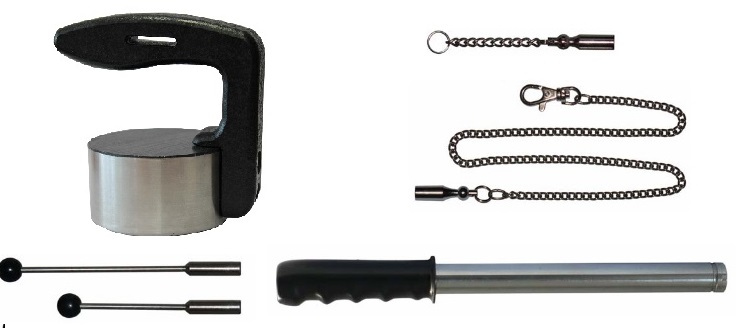
Sorting magnets are used in a vast range of fields and serve for identifying metals in the samples. Depending on the type, the magnets differ in size, strength, weight and shape.
Main types of magnets, their characteristics and features:
- Conical Sorting Magnet.
Simple and convenient device, which can be used to detect the metals in the samples. Most often, it is used by the workers of recycling centers. The magnet itself is relatively small and light (its length is only 5 cm or 1.97 inches, the diameter is 14 mm or 5.5 inches, the weight is 36 g or 1.27 oz). Conical magnet features a long chain made of brass (to ensure its safety), the length of the chain is 50 cm (19.7 inches). On the other end of the chain, there’s a metal loop, which allows to secure the magnet on the clothes avoiding the risk of the loss.
- Magnetic Pendulum.
A relatively small but strong magnet, which is used for detecting the signs of metal in samples. The device consists of neodymium (NdFeB) magnet. If compared to the previous type, this magnet is fixed on the solid rod. It allows to use this type of magnet to effortlessly remove the metal objects (the ones that can be detected by magnet) from hard-to-reach places. The total length of the device is 16 cm (6.3 inches), the diameter is 14 mm (5.5 inches).
- Extra Strong Sorting Magnet.
This device is made of strong neodymium (NdFeB) magnet. It allows to find the presence of metals even at a significant distance. The main fields where this type of magnet can be used are: determination of magnetic particles in non-magnetic samples (for example, precious metals or paper). The weight of the device is 1.5 kg (3.3 lbs).
- Extra Strong Sorting Magnet UP.
This model differs from the previous one in one detail: it has a convenient handle, which makes the operations easier.




